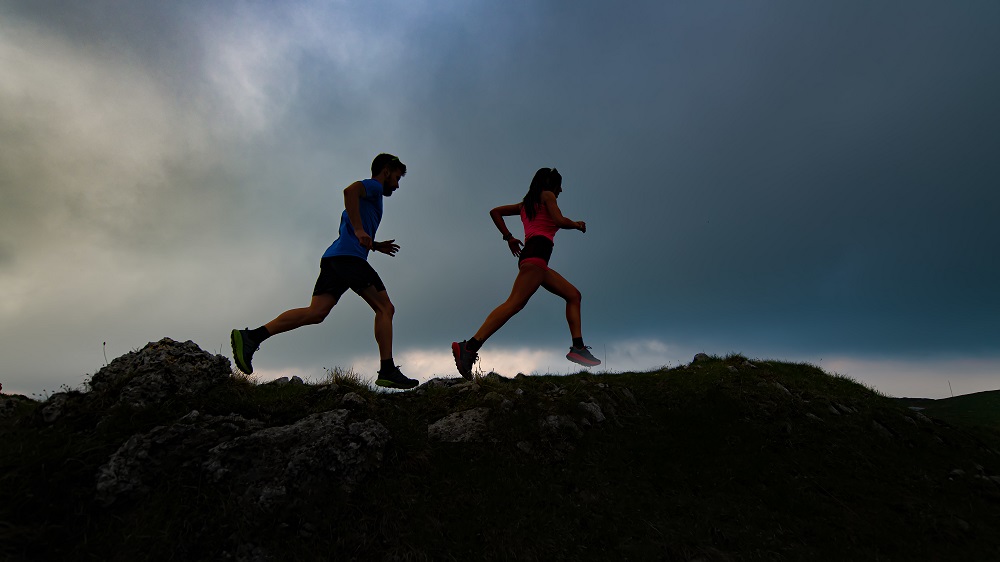Stimulated blood formation, but decreasing muscular performance – training at altitude can be quite the balancing act. Find the most important tips below.

Author: PD Dr. med. Christoph Dehnert, Specialist in General Internal Medicine and Cardiology FMH, Sports Medicine DGSP, Medbase Sports Medical Center Zurich
What goal do I want to achieve? This question stands at the beginning of any altitude training. Because altitude training has various faces: Is it about preparing for a competition in the mountains, for example an alpine marathon? Or should altitude training provide training incentives to increase performance in the lowlands? Depending on the goal, different aspects are important.
If your goal is to achieve the optimum performance in an alpine race, you have to acclimatize as much as possible to the corresponding altitude. To do this, you should have trained at altitude before the race, according to the motto “Train high – live high”, i.e. “Train at altitude and live at altitude”. This type of altitude training is – in the truest sense of the word – a tightrope walk: the danger of overtraining is much greater than in the lowlands. In order not to get exhausted, you have to reduce the usual training intensity and train more slowly than usual. The catch: the muscular performance adapts quickly – and consequently decreases in height. One way out of this dilemma could be to spread the acclimatization over several short episodes of three or four days each. So, for a few days, you have to train regularly at altitude, but in between, you need to train in the lowlands repeatedly.
Because the air is “thinner” at altitude, the red blood cells take up less oxygen than usual. In order to improve the oxygen supply to the organs, the body first eliminates blood plasma and “thickens” the blood. In addition, the heart pumps faster and thus increases the volume of blood pumped per minute. However, there is no rule of thumb on how much faster the pulse beats in the mountains. Therefore, the training levels from a performance diagnosis carried out in the lowlands cannot simply be transferred up in altitude. Also, the subjective assessment of the training intensity is often far off, especially when experience with training at altitude is missing. The best way to transfer this assessment to altitude is by looking at the respiration. As in the lowlands, during basic endurance training, one should be able to talk in short sentences while running. If you want to have a clearer picture of your performance, however, you cannot avoid performance diagnostics at altitude. Still, this is usually difficult to achieve.
While studies clearly prove that altitude training before a competition at altitude improves the performance there, the data situation is not too clear as far as altitude training for the purpose of increasing performance in the lowlands is concerned. The mechanisms of altitude training to improve performance in lowlands are not yet completely clear. Nonetheless, it is considered certain that the blood formation stimulated by the lack of oxygen at altitude has a performance-enhancing effect. However, this process only begins after two to three weeks of continuously staying over 2000 to 2500 meters. During this time, however, the muscular performance decreases due to the lower training intensities at altitude.

In competitive sports, therefore, two forms of altitude training have become established in recent years: firstly, the concept of “sleep high – train low”, i.e. sleeping at altitude to take advantage of the positive effects of oxygen deficiency on hematopoiesis, but training as usual in the lowlands so as not to have to reduce training intensities. And secondly, to shift the high-intensity training up to a considerable altitude in order to exert an additional stimulus. However, these two logical concepts do not always lead to an increase in performance. There are substantial individual differences here.
If at all, altitude training to improve performance in the lowlands is therefore only useful for top athletes who have exhausted their training in the lowlands to the maximum. But even with them, it is controversial whether it really brings the hoped-for benefit. Amateur athletes have rarely optimized everything in terms of training. For the best possible result at the peak of the season (assuming the competition takes place in the lowlands), they probably benefit more from training optimization than from altitude training.
Those who nevertheless decide in favor of an altitude training camp should bear in mind that experience has shown that the maximum performance can only be expected about two weeks later. But here, too, everyone has to make their own experiences.
Tips
- Staying at height acts as a stress factor for the body. For example, it takes about ten to fourteen days for the body to acclimatize to an altitude of 2000 to 2500 meters.
- If you want to prepare seriously for an alpine competition, it is best to keep a training diary and train regularly at altitude.
- When it comes to systematic preparation, the ultimate for a competition at altitude is an experienced trainer and/or performance diagnostics at altitude. However, this is expensive and there are very few providers.
- If the time before an alpine run is not enough for a good high-altitude training, you should train at least a few times at altitude to gain experience.
- If you don’t have the possibility to do so, it is best to arrive immediately before the competition. The performance at altitude is best in the first hours (maximum on the first day) after arrival. After that it decreases.
- Training at simulated altitude only makes sense if specific training is possible.
Translated by: Denise Kaufmann


